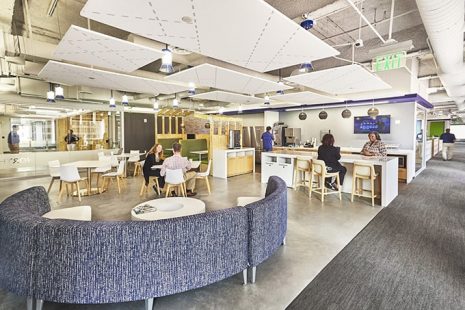Maintaining a Green Building in a IoT World

IoT has application in every corner of business, from workplace comfort to asset management to smart manufacture. By integrating with other technologies such as 5G and machine learning, IoT has the potential to completely overhaul the way organizations operate. However this ever-growing IoT expansion presents many challenges for a zero-carbon world.
Integrated Power Networks – Premise
Since the introduction of IEEE 802.af in 2003 we have been in a state of transition, incrementally improving the power consumption of PoE networks to what we have today – IEEE 802.az – Green Power over Ethernet or Energy Efficient Ethernet (EEE).
In typical networks, the majority of the active circuitry continues to draw maximum power whether or not there is data being actively transmitted. It’s estimated networking devices can consume as much as 10% of the power drawn by an IT network. IEEE 802.az takes power efficiency to the next level by enabling devices on a linked network to switch to a low power state during periods of inactivity. The goal is to reduce power consumption by 50% or more without impacting compatibility with existing equipment.
Building management
Using IoT to centralize Building Management Systems (BMS) can deliver significant energy saving performance by orchestrating and optimizing different building systems. For example, automated daylight harvesting can save as much as 45% of the costs of lighting. Other building management integrations which can save energy include window shades, HVAC systems and plug load monitors. Deloitte reports energy savings of up to 70% when companies implement IoT-enabled sensors and smart devices.
Low voltage sensors such as occupancy, ambient sensors, temperature / humidity and air quality can be used to generate real-time data and precisely optimize energy usage on a minute-to-minute, room-to-room basis. These types of devices and larger smart building systems take advantage of Power over Ethernet to allow efficient real time integration and action.
Power of Light
Implementation of a Gigabit Passive Optical Network can be a significant contributor to the greening of premise networks. The primary environmental benefits of the GPON platform are:
- Cost savings – Ongoing developments in technology lead to a constant drive to improve performance which in turn necessitates the removal of current copper based networks and replacing it with the latest and greatest. With GPON, the impact of system replacement is mitigated. Installation costs can be up to 50% cheaper given the effort required to remove existing network and reinstall cable, devices and active/passive equipment. Current copper networks require a direct line to a user and is restricted to 100m lengths. Optical fibers can be run in longer lengths and broken out to multiple outlets. GPON installations also reduce the need for expensive cable pathways. Results include lower impacts on costs and fewer resources required.
- Optical fiber networks inherently run cooler than traditional copper based networks. Switches used in copper networks require significant energy to power them, but they also generate heat that needs to be mitigated to ensure performance. The knock-on effect is that investment in HVAC systems and energy is required to achieve this end. No additional cooling capability is required for passive optical fiber networks.
- Less resource intensive – optical fiber is made from glass which is easily recycled.
Upcycling
The philosophy of Rethink, Reuse and Recycle is becoming increasingly well publicized. In networking, simple things such the ability to reuse outlets, enclosures, patch panels and other passive equipment required for the physical layer can have a huge impact. Products that have capability past their initial install date can save:
- Resources – in terms of minerals and energy to manufacture
- Capital – buy once, reuse multiple times to reduce installation costs
- Downtime – complete reinstalls result in under-utilization of assets.
The ability to reuse components also helps with scalability and provides flexibility in planning for future upgrades.
When considering upcycling, the manufacturing quality of components is critical. Products that are intended to be used and re-used will be developed with that goal in mind, with suitably rugged materials and build processes to ensure they can tolerate repeated installation and removal. Selecting a vendor that subscribes to this philosophy is essential.
Read the full article in the November 2021 issue of Inside Networks.
